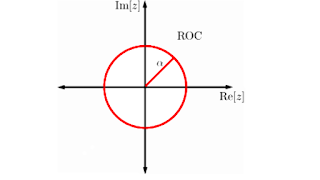FIR Filters multiple choice questions
FIR Filters 1. What is the value of h(M-1/2) if the unit sample response is anti-symmetric? a) 0 b) 1 c) -1 d) None of the mentioned Answer: 0 2. Which of the following condition should the unit sample response of a FIR filter satisfy to have a linear phase? a) h(M-1-n) n=0,1,2…M-1 b) ±h(M-1-n) n=0,1,2…M-1 c) -h(M-1-n) n=0,1,2…M-1 d) None of the mentioned Answer: ±h(M-1-n) n=0,1,2…M-1 3. If the unit sample response h(n) of the filter is real, complex valued roots need not occur in complex conjugate pairs. a) True b) False Answer: False 4. The lower and upper limits on the convolution sum reflect the causality and finite duration characteristics of the filter. a) True b) False Answer: True 5. The anti-symmetric condition is not used in the design of low pass linear phase FIR filter. a) True b) False Answer: True 6. The roots of the polynomial H(z) are identical to the roots of the polynomial H(z -1 ). a) True b) False Answer: True 7. The roots of...



